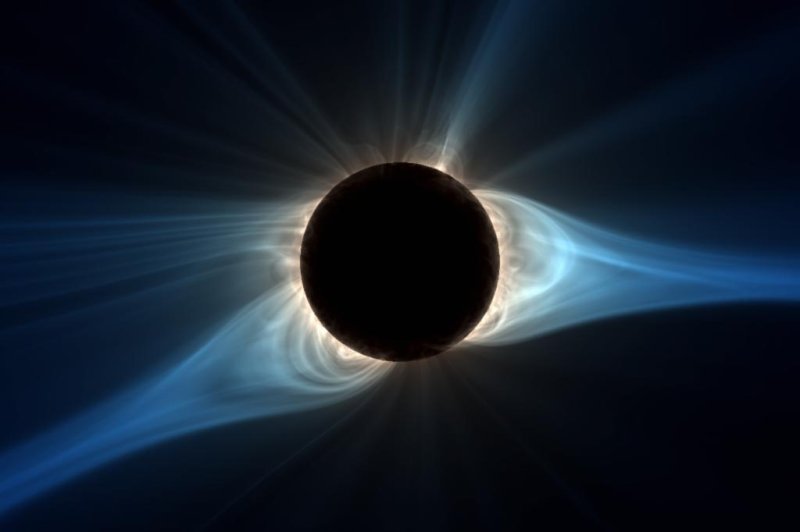A new simulation reveals what the corona may look like during Monday's total solar eclipse. Photo by Predictive Science, Inc.
Aug. 18 (UPI) -- Don't want to wait until Monday to watch the eclipse? A team of researchers at Predictive Science Inc. has a solution for you, a computer simulation of the much-anticipated total solar eclipse.
Scientists at PSI used the Stampede2 supercomputer at the Texas Advanced Computing Center at the University of Texas to forecast the behavior of the sun's corona during the eclipse.
The corona is the sun's atmosphere, a layer of plasma that extends several million miles into space. During a total solar eclipse, it is the only portion of the sun that remains visible, forming a fiery halo around the silhouette of the moon.
Researchers used their understanding of the interplay between the solar surface and its atmosphere to simulate the corona's behavior during the eclipse's 90-minute arc across the country.
"Advanced computational resources are crucial to developing detailed physical models of the solar corona and solar wind," Jon Linker, president and senior research scientist of PSI, said in a news release. "The growth in the power of these resources in recent years has fueled an increase in not only the resolution of these models, but the sophistication of the way the models treat the underlying physical processes as well."
Researchers at PSI translated their computer simulations to create a visual representation of what viewers along the path of totality are likely to see as moon blankets the face of the sun on Monday.
Scientists have published several of the images from their simulation online.
The team's simulation was aided by the observations of NASA's Solar Dynamics Observatory and its Helioseismic and Magnetic Imager.
Researchers will be able to test their simulations against recordings of the actual eclipse and corona, and use the analysis to improve their understanding of the relationship between the sun's rotation, magnetic fields and corona.
The work could ultimately help scientists better forecast solar storms.
"With the ability to more accurately model solar plasmas, researchers will be able to better predict and reduce the impacts of space weather on key pieces of infrastructure that drive today's digital world," said Niall Gaffney, head of data intensive computing at TACC.















